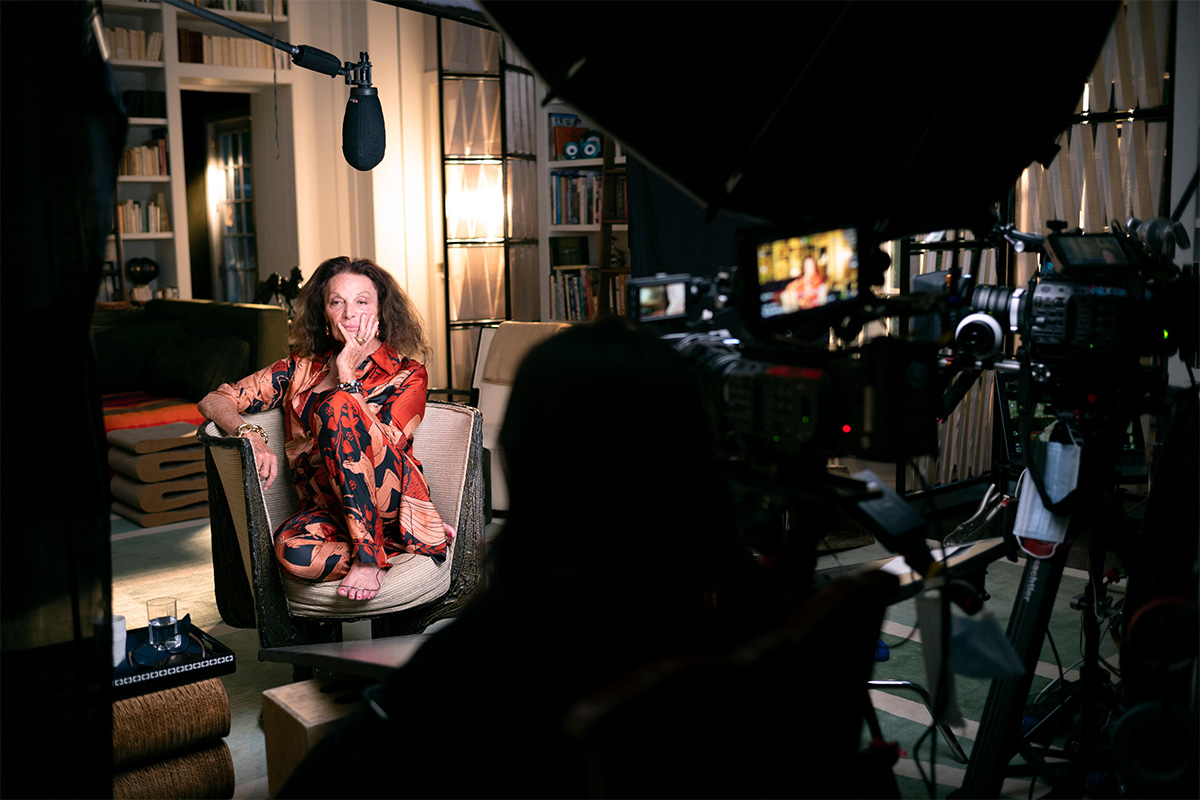When Lily Nahmias was liberated from Ravensbrück concentration camp in 1945, she weighed only 44 pounds. Five years earlier, the Greek Jew from Thessaloniki was working in the Resistance movement in Belgium with her parents. (The family emigrated there in 1930.) But in 1944, she was caught by the Nazis and deported to Auschwitz. For 13 months she survived the horrific conditions of the camp and as Allied forces closed in, a death march.
Upon liberation, 22 year-old Lily was able to reunite with her parents and her fiancé, Leon Halfin, to begin the process of healing. But doctors told Lily she would never have children. Nine months later, Lily gave birth to a daughter named Diane Simone Michele Halfin. You probably know her better as fashion designer, style icon and inventor of the wrap dress Diane von Fürstenberg.
“Just the fact that I was born was a victory,” von Fürstenberg says in a new documentary about her life. “She used to say, ‘God saved me so that I can give you life. By giving you life, you gave me my life back. You are my torch of freedom.’”
A little while later she adds, “My roots are Jewish. My mother paid for that, she paid for that. But I was her revenge.”
This is the crux of “Diane von Fürstenberg: Woman in Charge.”
The 97-minute documentary, which releases on Disney+ and Hulu tomorrow, explores how Diane von Fürstenberg, also known as DVF, became the household name that she is today. It covers the rise of her fashion brand; her marriage to Swiss-German socialite and aristocrat Prince Egon von Fürstenberg; her entrance into European high society; her life as a mother and her many love affairs.
“My mother was very tough when I was a little girl. She wanted me to be independent, no matter what,” DVF explains early on in the film. “She wanted to equip me in case I ever needed to live what she lived.”
Clearly, Lily’s message of independence was received. In 1974, von Fürstenberg invented her brightly colored wrap dress and became an overnight success in the fashion world. The wrap dress quickly became a favorite of the growing number of women in the workplace and DVF was cemented as an icon of liberated womanhood. The documentary shows how von Fürstenberg has continued advocating for women to this day through the DVF Awards and her platform InCharge.
Not only that, but DVF’s strong will also enabled her to handle the antisemitism she felt from her father-in-law and from the ’60s and ’70s jet set in Europe. “I don’t know why Egon is marrying this dark little Jewish girl,” Egon’s father reportedly said to a friend of Diane’s before the wedding. Later, when DVF’s children Tatiana and Alexander were born, he called them “little Jews” in front of Lily.
“I was named after my great-grandfather, who was an Austrian aristocrat. And my great-grandmother was a Holocaust survivor. So it’s always been talked about in my family that we’ve had this dynamic,” Alexander’s son Tassilo points out in the film. “We’ve had both the suffering and the oppressing.”
Of course, “Woman in Charge” also covers the low points in DVF’s life: her divorce from Egon and his subsequent AIDS-related death, the confluence of a period of stagnancy in her career and her mother’s mental health breakdown in the 1980s and DVF’s cancer diagnosis. But throughout it all, Diane von Fürstenberg’s Jewishness is the connecting thread. In essence, filmmaker Sharmeen Obaid-Chinoy is (rightly) saying: DVF’s Jewishness and her mother’s experience in the Holocaust are what made her the independent, pioneering woman she is. It would be impossible to tell her story and not include them.
Perhaps the most poignant moment of the film is when von Fürstenberg speaks about her mother’s nervous breakdown. During a business trip in Germany in the 1980s, Lily was triggered into a panic by the sound of German men speaking loudly. DVF immediately flew to Geneva to be with her mother at a mental health facility and aid during her recovery. It was only during this time that DVF fully came to understand the horrors that her mother endured during the Holocaust. In between DVF and other talking heads speaking about the moment, we see shots of von Fürstenberg visiting the Kazerne Dossin Holocaust museum in Belgium and reading a letter her mother wrote to her parents before being deported to Auschwitz.
When DVF arrived back in the United States, she was ready to do something she had never done before: publicly embrace her Jewish identity. Soon after, she was invited by the Anti-Defamation League to give a speech at the Pierre Hotel. She took the opportunity to speak about being the daughter of a survivor.
“To hear myself saying that was so shocking to me,” she recalled. “I started to tremble. I couldn’t believe that I said that. And I remember I walked back home. And I was in shock. I had realized who I was. And where I came from. And before that I had never done that.”



